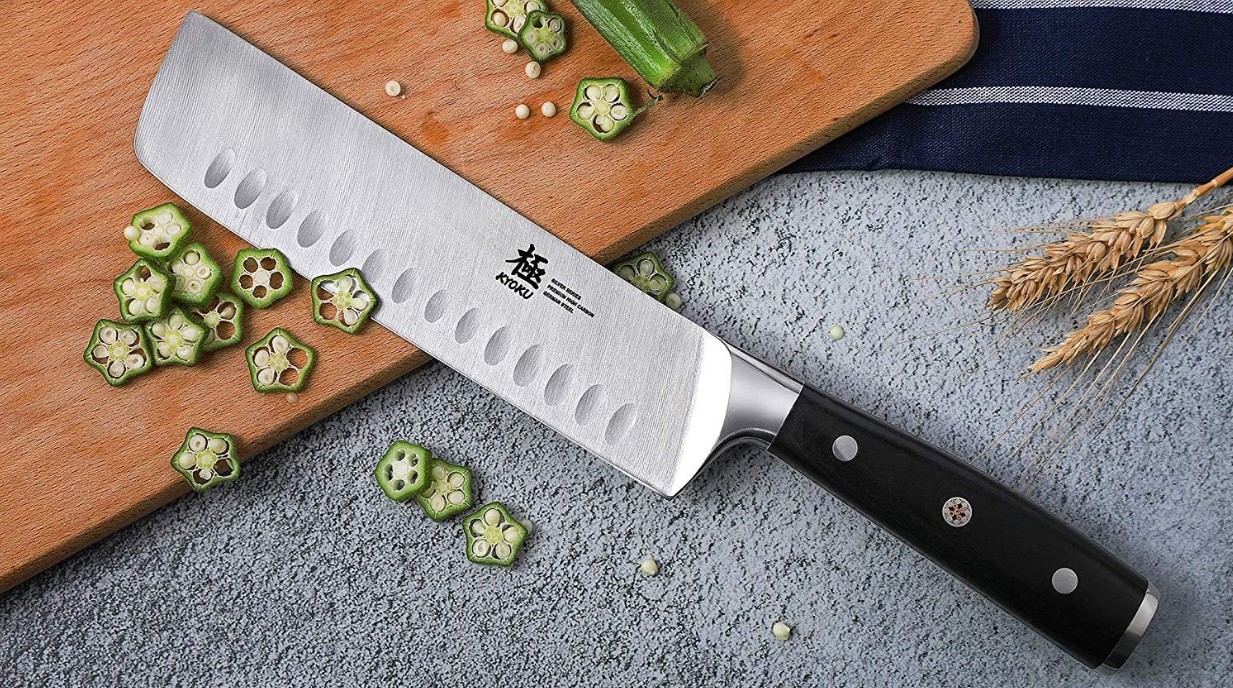
Introduction
Japanese knives are renowned worldwide for their exceptional sharpness, durability, and craftsmanship. Made from high-quality Japanese steel, these knives embody centuries of blacksmithing tradition and modern technological advancements. But what sets Japanese knives apart from others? In this article, we explore the history, craftsmanship, types, and benefits of Japanese knives crafted from superior Japanese steel.
The Historical Legacy of Japanese Knives
The art of Japanese knife-making dates back to the samurai era, where swordsmiths perfected the techniques used to craft razor-sharp blades. As Japan transitioned from the feudal era, these techniques were adapted to create superior kitchen knives.
- The Influence of the Katana: The same forging methods used for samurai swords were applied to crafting kitchen knives, ensuring strength and precision.
- Tamahagane Steel Origins: Traditional knives were made using Tamahagane, a high-carbon steel renowned for its purity and resilience.
- Edo Period Refinements: With the rise of specialized cuisine, blacksmiths began crafting different knife styles to meet the precise needs of Japanese chefs.
The Unique Craftsmanship Behind Japanese Knives
Japanese knives are the result of meticulous craftsmanship and advanced forging techniques.
- Hand-Forged Perfection: Many knives are still handcrafted by skilled artisans who use time-honored methods to ensure quality.
- Layered Steel Construction: Some knives feature Damascus-style layering, enhancing durability and aesthetic appeal.
- Precision Sharpening: Japanese knives are often honed to a sharper angle (usually 10-15 degrees per side) compared to Western knives, making them incredibly precise.
Key Characteristics of Japanese Knives
The superior steel and crafting techniques give Japanese knives several distinct advantages:
- Razor-Sharp Edge: The high-carbon steel composition allows for an exceptionally sharp edge that retains its sharpness longer than most Western knives.
- Lightweight & Balanced: Japanese knives are designed for precision and ease of handling, making them a favorite among professional chefs.
- Hardness & Durability: Many Japanese knives have a Rockwell hardness rating of 60+ HRC, ensuring long-lasting performance with proper care.
Different Types of Japanese Knives
Japanese knives are designed for specific culinary tasks, each excelling in its own domain:
- Gyuto Knife: The all-purpose chef’s knife, ideal for meat, fish, and vegetables.
- Santoku Knife: A versatile knife suited for slicing, dicing, and chopping.
- Deba Knife: A thick, sturdy knife used for breaking down fish and poultry.
- Yanagiba Knife: A long, slender knife for precision slicing of sashimi and sushi.
- Nakiri Knife: A vegetable knife with a straight blade for efficient chopping.
- Usuba Knife: A single-beveled vegetable knife for ultra-thin cuts.
- Honesuki Knife: A boning knife designed for poultry and butchery tasks.
Whether you are looking for a Gyoto kinfe, Santoku knife, Nakiri knife, or other Japanese knives, Kyoku kitchen knives offer an exceptional balance of sharpness, durability, and aesthetic appeal. Crafted with premium Japanese steel and designed for both professional chefs and home cooks, Kyoku knives provide precision cutting with excellent edge retention. Their ergonomic handles and beautifully forged blades make them a top choice for people looking to elevate their culinary experience.
Why Japanese Knives Are Preferred by Chefs
Japanese knives are the top choice for many chefs due to their performance and reliability:
- Sharpness Retention: High-carbon Japanese steel maintains a razor-sharp edge longer than standard stainless steel knives.
- Specialized Designs: Each knife is crafted for a particular function, enhancing precision and control.
- Aesthetic Craftsmanship: Many Japanese knives feature beautiful Damascus patterns and handcrafted handles, making them works of art.
Caring for Japanese Knives
To maintain the longevity of Japanese knives, proper care is essential:
- Hand Wash Only: Avoid dishwashers as they can damage the sharp edge and steel composition.
- Use a Wooden Cutting Board: Hard surfaces like glass or stone can dull the blade.
- Regular Honing & Sharpening: Use a whetstone to keep the edge sharp and precise.
- Proper Storage: Store in a knife block or on a magnetic strip to prevent damage.
Conclusion
Japanese knives are more than just kitchen tools; they represent centuries of craftsmanship, precision, and excellence. Whether you are a professional chef or a home cook, investing in a Japanese knife can transform your culinary experience. Their superior sharpness, durability, and beauty make them an essential addition to any kitchen.